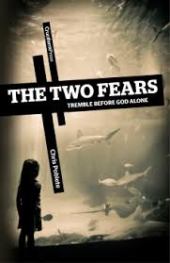
First, it explains what fear is, ‘To fear something is to give credence to its power over you’. Which is i think a better explanation of fear as compared to how Christian normally explains that fear of God is not like your fear of spider. This definition works well in both kind of fears.
After defining it, it then moves to explain why we must fear God. Mainly explaining about the characteristics of God, most importantly, His Otherness (set apart-ness), i.e. His Holiness. After explain who God is, Poblete then explains what God does (or will do), namely judge all sinners.
Which then moves to the next motivation of our fear as Christians, we fear God not because of punishment, but because we are saved by the Son, we fear out of a grateful heart, this is what Poblete calls Holy Fear. Which he then moves on to explain what benefits we as Christians can have as we cultivate such holy fear.
Next, he explains the unholy fear, which is directly opposite of holy fear. The consequences of unholy fear are then examined. Personally I thought that this chapter was the most well written since it really can show the heart of a person who shows unholy fear in his life.
Two more examples of unholy fear is then expounded, first the fear of man, and then the fear of situation. The fear of situation and the following chapter after that was also well written and shows close connection between the unholy fear, and the God whom we should have holy fear for. Poblete correctly points out that both christians and non-christians will face situations that may have cause for fear, the only difference is that as christians our focus is not on the situation, our focus is on the God who brings us in, and through the situation, all the way.
The last chapter is a heralding call to the church, to fear God together as a congregation.
This is a good book with points adeptly explained and well illustrated, very good for those who need an introduction to this topic and even for those who already have some knowledge about the topic. This is not a dry-as-bone book, but enriching and practical.
Ratings: 3.75/5
If you're interested you can get it here and here (free international shipping), Kindle.
